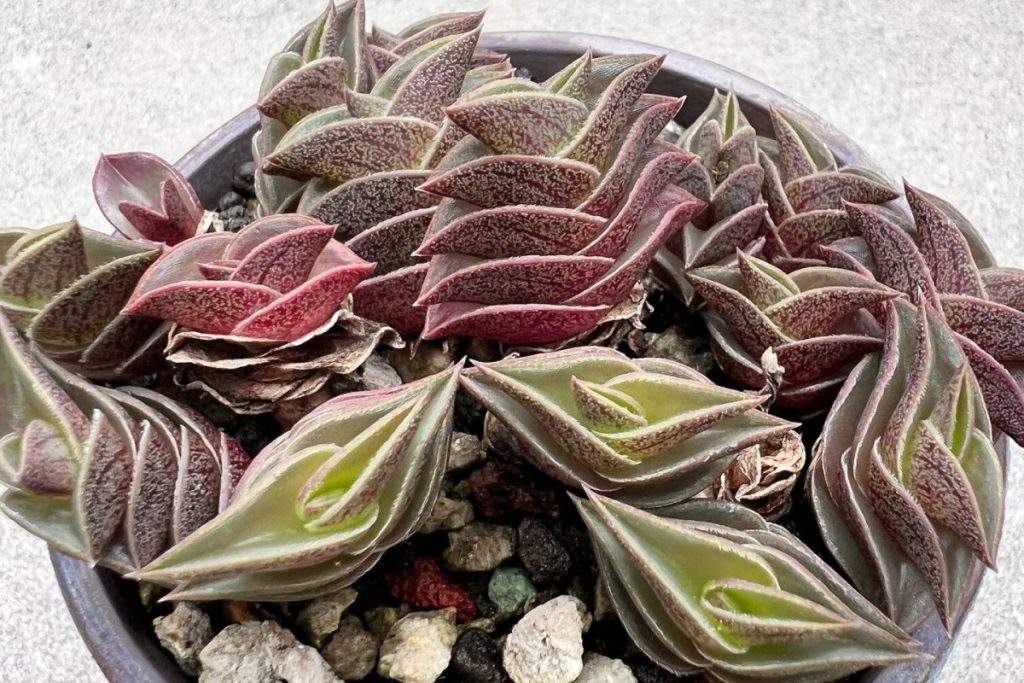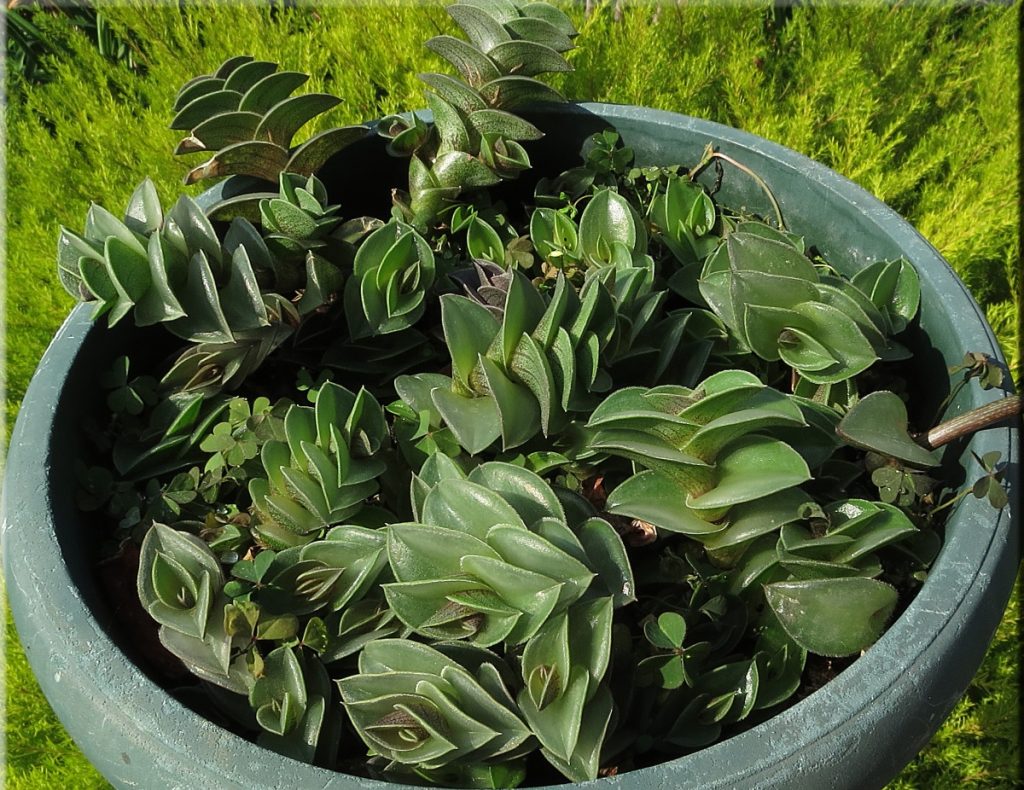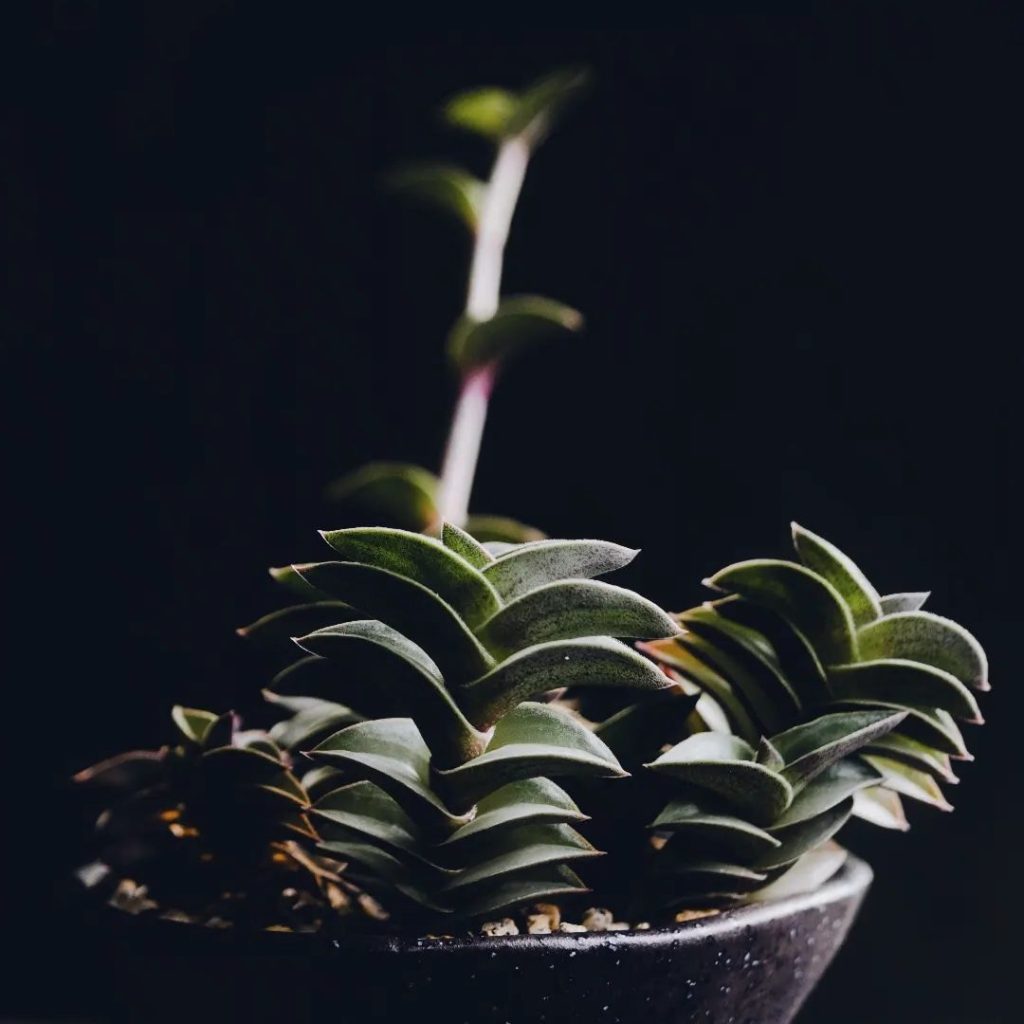Tradescantia navicularis: The Mesmerizing Boat-Leaf Succulent You Need
Are you on the hunt for the perfect low-maintenance plant to jazz up your space? Look no further than the ultra-trendy Tradescantia navicularis! This miniature trailing succulent is going to be your new garden bestie. With its vibrant foliage and easygoing personality, it’s the ideal indoor plant for green thumbs and beginners alike. Get ready to be obsessed!

Contents
Let’s get to know this little green gem, shall we? Tradescantia navicularis is part of the wandering jew plant family and boy, does it have some funky features! It grows in two totally different stem styles – short bulbous shoots or long trailing vines that root wherever they touch down.
The leaves are the real showstoppers though. Picture this: plump, lance-shaped leaves around 1-2 inches long and up to an inch wide. They curve inwards like tiny green boats with vibrant purple striping on the undersides. So cool! The bronzy-green tops add an extra punch of color too.
But wait, there’s more! In summer, these beauties sprout dainty lilac to magenta flowers. They’re not around for long though – the buds only open for a single day, hence the cute nickname “day flowers.” Still, catching those fleeting blooms is a special treat.
Keeping Tradescantia navicularis happy is a total breeze. It’s all about finding that perfect balance of light, water, soil and fertilizer. Let’s break it down:
Light
Tradescantia navicularis thrives in bright, indirect light. An ideal spot is a few feet back from an east or west-facing window where it gets 4-6 hours of gentle morning or evening sunlight. Too much direct intense sun will scorch the leaves, but it does need some indirect bright light to maintain its vibrant coloring.
If you don’t have a good window location, supplement with a grow light placed 6-12 inches from the top of the plant for 12-16 hours per day. Rotating the pot every week ensures even lighting and prevents lopsided growth. With the right balance of bright, indirect light, your Tradescantia will stay compact, full and deeply colored.

Water
Proper watering is key for Tradescantia. The goal is keeping the soil lightly moist, but never sopping wet. Use your finger to check the top inch of soil every few days. If it’s dried out, it’s time for a drink! Room temperature water works best to avoid shocking the roots.
Soil
When potting your plant, use a well-draining soil mix. You can buy a quality cactus/succulent potting mix or make your own by combining peat moss, perlite and compost. Having that breathable soil is crucial for preventing waterlogged roots.
Fertilizer
Feed your hungry Tradescantia every month during the growing season with a balanced liquid fertilizer. Make sure to dilute it down to avoid burning those delicate roots. Ease off the feedings in winter when growth naturally slows down.
Temperature & Humidity
These tropicals like it warm, around 70-85°F. Average household humidity is usually fine, but you can mist the leaves if the air feels too dry.
Pests and Diseases
Be on the lookout for common houseplant pests like aphids, mealybugs or spider mites. If any creepy crawlies pop up, you can use insecticidal soap or neem oil to get rid of them.
Pruning
Doing some light pruning helps keep your Tradescantia’s trailing shape looking tidy. Just snip off any deadheads or scraggly vines as needed.

Potting and Repotting
These guys don’t mind being a bit rootbound, but you’ll still want to size up the pot every couple of years in early spring. Use a container with good drainage and fresh potting mix.
Ready to multiply your Tradescantia collection? You can easily propagate new plants from:
- Stem cuttings – Snip off a few inches of stem and pop it in some moist soil
- Division – Carefully tease apart the root mass into two or more sections
- Plantlets – Tiny plants will sprout from the nodes along the vines. Pot those up individually!
There you have it, lovers of lush greenery! The eye-catching Tradescantia navicularis makes for an awesome addition to any houseplant haven. With its vibrant colors and quirky growth habit, this little succulent is guaranteed to be a conversation starter. It’s easy-peasy to care for too. So what are you waiting for? Get yourself one of these boat-leaf bombshells stat!
